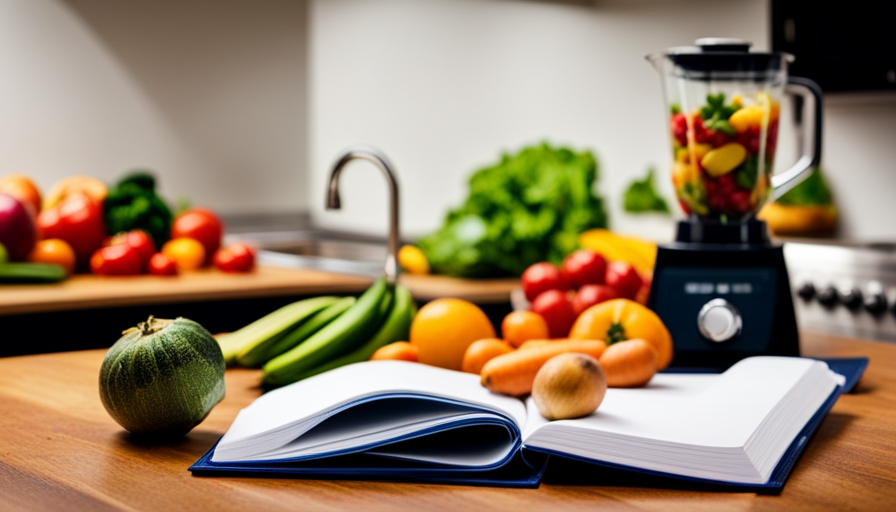Exciting Cuban Coffee: Colada, Cortado, and Beyond!
Indulge in the rich flavors and captivating aromas of Cuban coffee as we embark on a journey through the world of Colada and Cortado. These enticing beverages, deeply rooted in Cuban tradition, offer a unique and satisfying experience for coffee connoisseurs seeking bold and distinctive flavors.
Imagine yourself transported to a vibrant cafe in Havana, where the intoxicating scent of freshly brewed coffee fills the air. Here, amidst the bustling energy, you are introduced to the Colada, a strong and sweetened espresso meant to be shared with friends. This dark roasted elixir, infused with hints of brown sugar and a touch of salt, is served in small styrofoam cups, inviting communal enjoyment and fostering a sense of camaraderie.
In contrast, the Cortado, a Spanish-style coffee, offers a more intimate and textured taste experience. Crafted with expert precision, this single serving beverage combines espresso shots with a delicate infusion of steamed milk. The milk acts as a harmonious counterpoint, effortlessly tempering the intensity of the espresso, and resulting in a velvety smooth concoction.
Join us as we unravel the secrets of these captivating coffees, exploring their origins, traditional recipes, and brewing methods. Whether you prefer the shared experience of the Colada or the nuanced delight of the Cortado, Cuban coffee is sure to tantalize your taste buds and transport you to the vibrant streets of Cuba.
Key Takeaways
- Colada coffee is a short, strong, and sweetened espresso meant to be shared with friends, famous in Cuba and South Florida, and served in small styrofoam cups.
- Cortado coffee is a Spanish-style coffee that contains espresso shots and a small amount of steamed milk, creating a balanced and textured drink.
- Colada and Cortado are both traditional Cuban coffee recipes, with Colada being sweeter due to brown sugar and Cortado being more textured due to milk.
- Cuban coffee is about twice as strong as regular coffee and uses a mix of brown sugar and coffee to create a distinct and rich flavor profile.
What is Colada Coffee?
Colada coffee, a traditional Cuban coffee, is a short and strong espresso beverage that is sweetened with brown sugar and meant to be shared with friends, typically served in small styrofoam cups.
This coffee holds significant cultural significance in Cuban and South Florida communities. It is deeply rooted in the Cuban coffee tradition and is known for its unique serving traditions. Colada coffee is often enjoyed in a social setting, where friends gather to share the drink in small cups. The use of styrofoam cups is a common practice, adding to the cultural experience.
The coffee itself is made with dark roasted coffee, brown sugar, and filtered water. It may also contain a pinch of salt to balance out the sweetness. The preparation method using a Moka pot is recommended to achieve the desired flavor and strength.
Overall, Colada coffee is a beloved Cuban beverage that represents the rich coffee culture and community bonding.
Traditional Cuban Coffee Recipes
Traditional Cuban coffee recipes encompass a variety of flavors and styles, with each drink offering a unique experience that has captivated coffee enthusiasts worldwide. Cuban coffee culture is rich and diverse, with different regions and households having their own variations of Cuban coffee.
Here are some traditional Cuban coffee recipes:
-
Colada: A short, strong, sweetened espresso meant to be shared with friends. It is served in small Styrofoam cups and typically contains four to six shots of Cuban espresso. A pinch of salt may be added to balance out the sweetness.
-
Cafecito: Also known as Cuban espresso, it is about twice as strong as regular coffee. It is made with a mix of brown sugar and coffee, creating a distinct and rich flavor profile.
-
Cafe Con Leche: This traditional Cuban breakfast drink consists of equal parts Cuban espresso and steamed milk. It is creamy, smooth, and perfect for starting the day.
-
Cortadito: A sweeter Cuban espresso drink that contains sugar, steamed milk, and espresso. The balance between milk and espresso is 1:1, and the milk is frothed to a creamy texture before being poured into the coffee.
These traditional Cuban coffee recipes offer a glimpse into the rich coffee culture of Cuba and are a must-try for coffee lovers seeking a strong and flavorful beverage.
Making Colada Coffee
One method for preparing Colada coffee involves using a Moka pot to brew dark-roasted Cuban coffee beans and combining the first drops of coffee with brown sugar to create a foamy, beige-colored mixture. The Moka pot is a traditional brewing method used in Cuban coffee culture and is known for producing a strong, rich espresso-like coffee. By using this method, the dark-roasted Cuban coffee beans are able to release their full flavor and aroma, resulting in a bold and intense cup of Colada coffee. The addition of brown sugar adds a touch of sweetness to balance out the strong flavors of the coffee. This brewing method, along with the use of brown sugar, is a reflection of the history and cultural significance of Colada coffee in Cuban and South Florida communities.
| Brewing Method | Description |
|---|---|
| Moka Pot | Uses steam pressure to brew coffee, producing a strong and robust flavor. |
| Espresso Machine | Uses high pressure to extract the flavors from the coffee grounds, resulting in a concentrated and intense cup of coffee. |
| French Press | Uses a plunger to separate the coffee grounds from the brewed coffee, resulting in a full-bodied and flavorful cup. |
| Pour Over | Involves pouring hot water over coffee grounds in a slow and controlled manner, producing a clean and nuanced cup of coffee. |
The different brewing methods for Colada coffee offer varying levels of intensity and flavor profiles, allowing coffee lovers to choose the method that best suits their preferences. The history and cultural significance of Colada coffee can be experienced through the traditional brewing methods, as they have been passed down through generations and continue to be cherished in Cuban and South Florida communities.
What is Cortado Coffee?
The art of crafting a Cortado coffee is akin to a delicate dance between espresso and steamed milk, resulting in a harmonious balance of flavors. This Spanish-style coffee has gained popularity for its unique characteristics and enjoyable taste.
Here are some key aspects of Cortado coffee:
-
Cortado coffee benefits:
- The combination of espresso and steamed milk creates a smooth and creamy texture.
- The small amount of milk helps to mellow out the intensity of the espresso, making it more approachable for those who prefer a less strong coffee.
- The balanced ratio of milk and espresso allows the flavors of both to shine through.
-
Cortado coffee variations:
- Some variations of Cortado coffee include adding a touch of vanilla or caramel syrup for a hint of sweetness.
- Others may opt for different types of milk, such as almond or oat milk, to cater to dietary preferences.
- Some coffee shops may also add a sprinkle of cinnamon or cocoa powder on top for added flavor and visual appeal.
Cortado coffee offers a delightful and balanced coffee experience, making it a popular choice among coffee enthusiasts seeking a unique and enjoyable beverage.
Making Cortado Coffee
To create a Cortado coffee, the first step is to start with a double espresso shot made from fresh fine-grind espresso beans. This strong and concentrated coffee forms the base of the drink. The next step is to balance the espresso with an equal amount of steamed or lightly textured milk. This creates a creamy and velvety texture that complements the rich flavor of the espresso. The use of a Moka pot for making Cortado coffee offers several benefits. The Moka pot method allows for a traditional and authentic preparation of the espresso, resulting in a robust and full-bodied taste. Additionally, the Moka pot’s unique brewing process enhances the flavors and aromas of the coffee, making it the perfect choice for a Cortado. In Cuban and South Florida communities, colada coffee holds cultural significance. It is a social and communal drink, meant to be shared with friends and family. The small styrofoam cups used to serve Colada coffee are a symbol of this tradition, fostering a sense of togetherness and community.
Frequently Asked Questions
What are some other traditional Cuban coffee recipes besides Colada and Cortado?
Besides Colada and Cortado, there are other traditional Cuban coffee recipes that are popular in Cuban coffee traditions and culture. These include Cafecito, Cafe Con Leche, and Cuban Coffee.
Cafecito is a concentrated shot of espresso sweetened with sugar.
Cafe Con Leche is a combination of equal parts of Cuban espresso and steamed milk.
Cuban Coffee is a strong and rich coffee made with dark roasted coffee and brown sugar.
These traditional Cuban coffee recipes showcase the unique flavors and brewing methods that are beloved in Cuban coffee culture.
How does Cuban coffee differ from regular coffee in terms of strength and flavor?
Cuban coffee differs from regular coffee in terms of strength and flavor. It is about twice as strong as regular coffee due to the use of a mix of brown sugar and coffee, which creates a distinct and rich flavor profile.
Cuban coffee also holds cultural significance, particularly in Cuban and South Florida communities. Brewing methods, such as using a Moka pot for colada coffee, contribute to the unique taste and experience of Cuban coffee.
Are there any alternative methods for making Colada coffee besides using a Moka pot?
When it comes to making Colada coffee, the traditional method involves using a Moka pot. However, there are alternative methods for those who don’t have access to a Moka pot or prefer different brewing techniques.
One alternative method is using a French press or a coffee percolator to brew the dark-roasted Cuban coffee.
Another option is using a pour-over method with a fine mesh filter.
Additionally, some coffee enthusiasts have experimented with making Colada coffee using cold brew techniques, which can result in a smoother and less acidic flavor profile.
What is the significance of the pinch of salt in Colada coffee?
The pinch of salt in colada coffee serves a significant purpose. It helps to balance out the sweetness of the drink, creating a more harmonious flavor profile. Additionally, the salt can enhance the overall taste and bring out the natural flavors of the coffee.
While the health benefits of colada coffee primarily come from the antioxidants and potential mood-boosting effects of caffeine, the pinch of salt does not contribute significantly to these health benefits.
Can you customize the ratio of milk to espresso in a Cortado coffee?
When it comes to customizing the ratio of milk to espresso in a cortado coffee, there is room for experimentation and personal preference. Some coffee enthusiasts enjoy exploring latte art techniques, using different types of milk to achieve desired textures and flavors.
From whole milk to almond milk or oat milk, the choice of milk can greatly influence the overall taste and mouthfeel of the cortado. Ultimately, the ratio of milk to espresso can be adjusted to suit individual taste preferences and desired strength of the drink.
What Cuban Coffee Options Are Similar to Lavazza’s Offerings?
Cubita and Café Bustelo are Cuban coffee options similar to Lavazza’s offerings. These bold and rich flavors are reminiscent of the timeless Italian coffee brand. Both options provide a strong, concentrated brew that appeals to those who appreciate a robust and flavorful coffee experience.
Conclusion
In conclusion, Cuban coffee offers a captivating journey for coffee enthusiasts. From the robust and sweet Colada coffee, meant to be shared and savored with friends, to the textured and balanced Cortado, there is a taste for every palate.
The Moka pot brewing method brings out the rich flavors of Colada, while the combination of espresso and steamed milk in Cortado creates a harmonious blend.
Whether you crave a strong and bold experience or a nuanced and delicate one, Cuban coffee delivers with its intriguing and diverse options.
So dive into the world of Cuban coffee and let your taste buds embark on a remarkable adventure.










